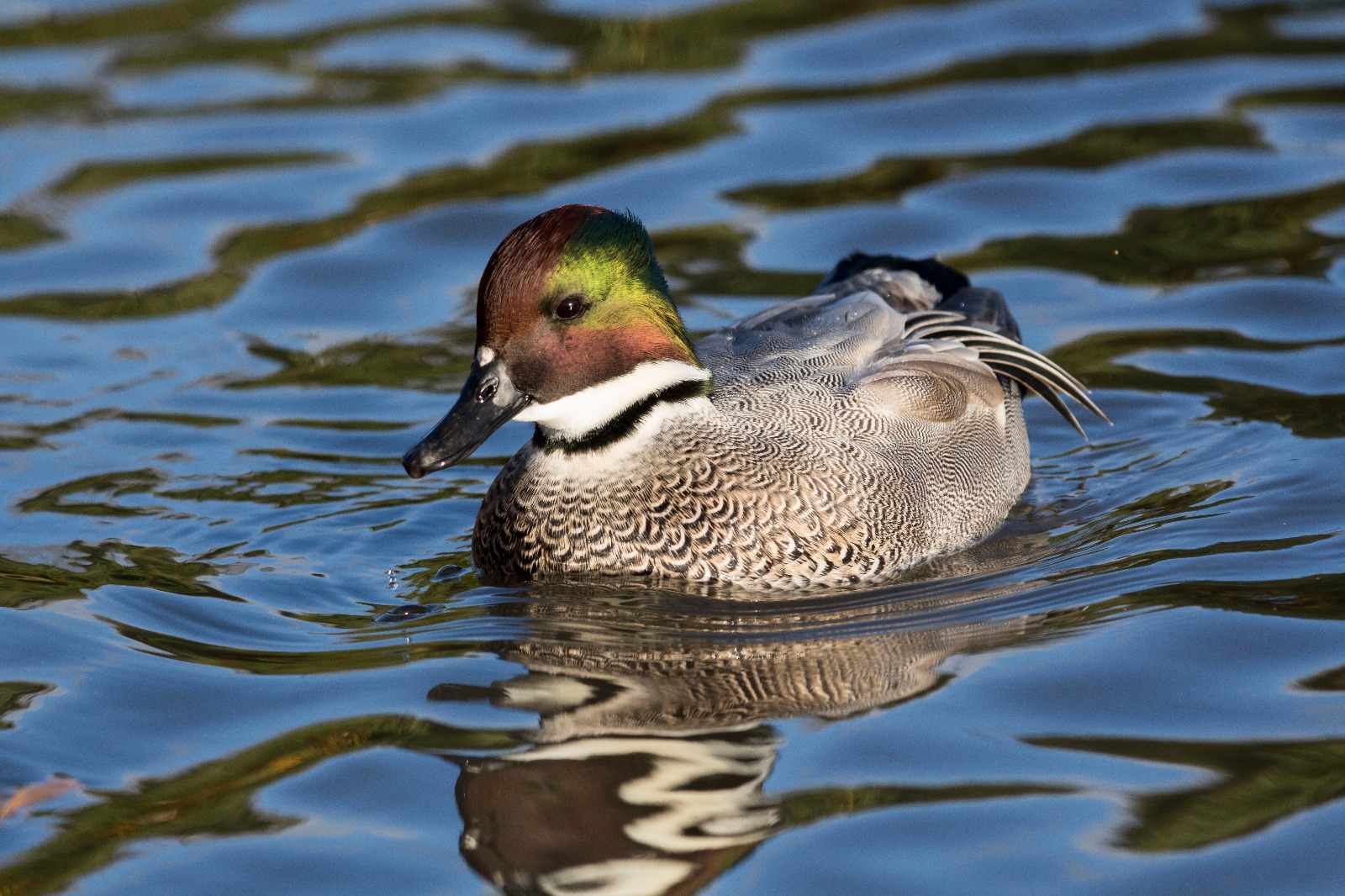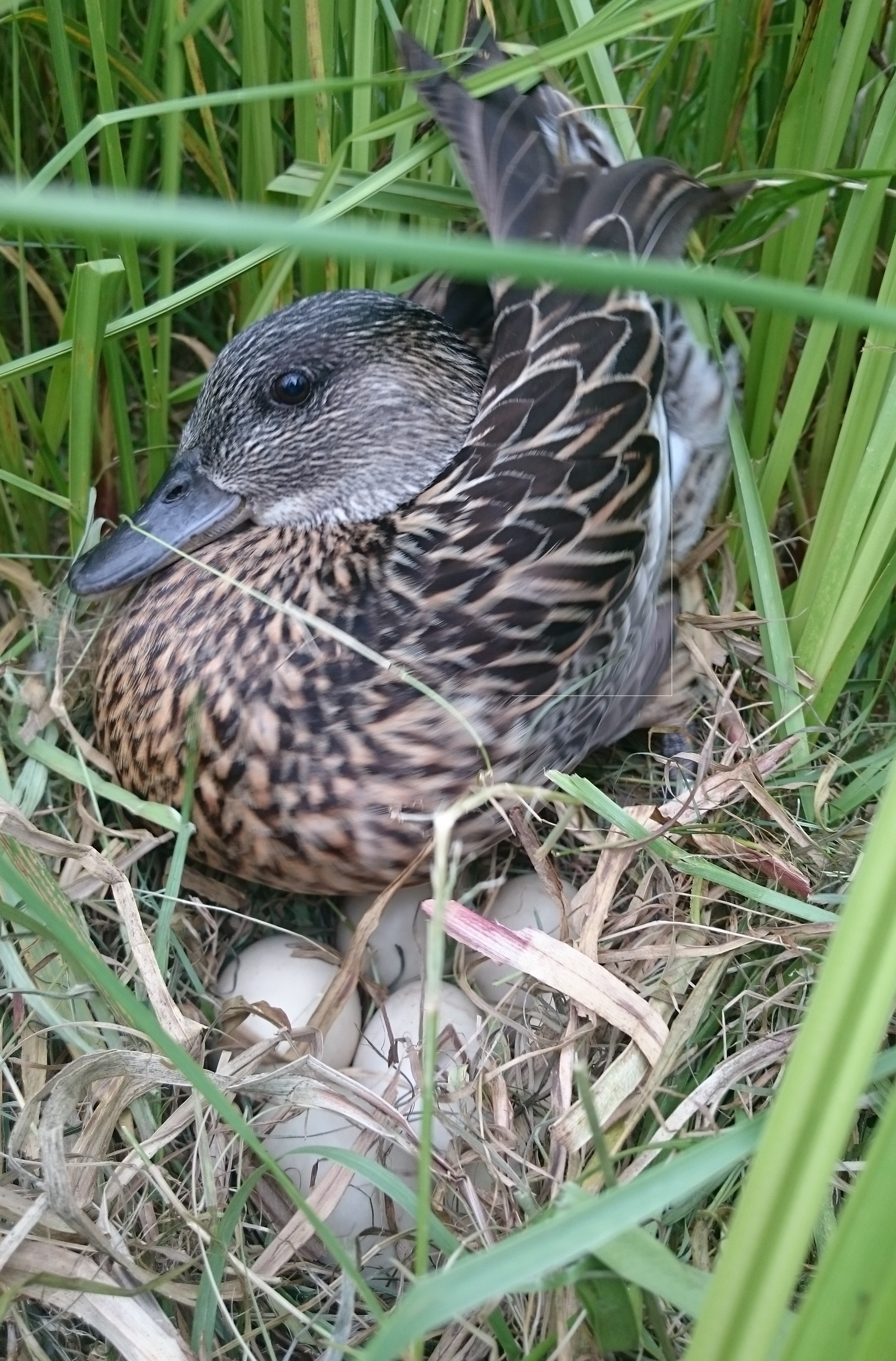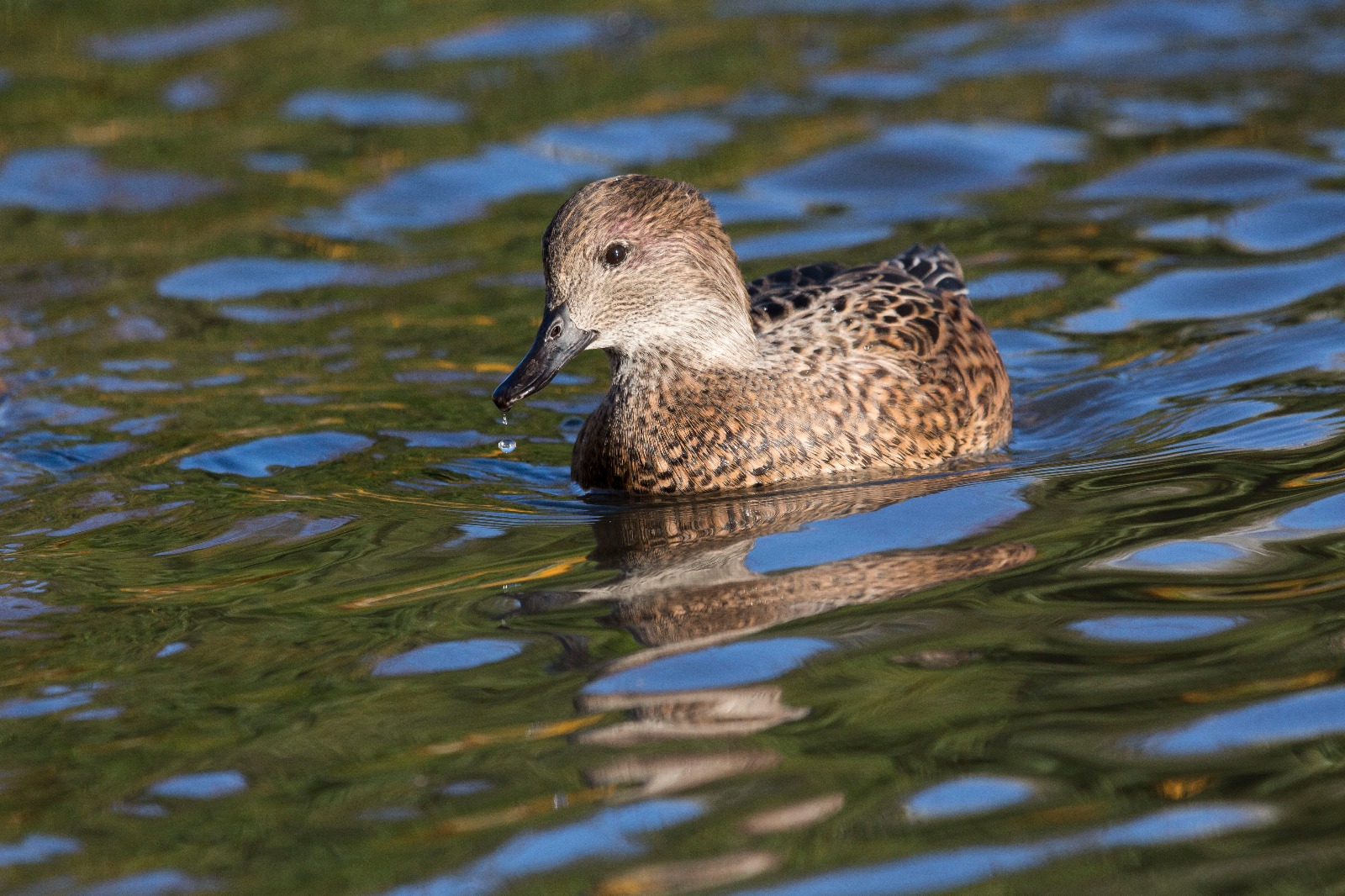Falcated ducks.
The falcated duck or falcated teal, named after its long currved shaped feathers is a dabbling duck found in eastern Asia. This species is most closely related to Gadwall, shown by similarities in body shape and size. They breed in Lake Baikal, Siberia and then migrate to south east Asia during the winter.

Standing on one leg helps them keep warm
They are an exceptionally plump duck, with tiny little legs and feet helping them to stand on sheet ice and withstand freezing temperatures. Many wildfowl species keep warm in cold conditions using a heat transfer system. Their legs and feet can afford to be cold where they touch frozen ground, because the blood is warmed upon re-entering the body. Minimising heat loss is a big deal in the duck world, hence standing on one leg, and loafing together for body heat.
Named after its ‘falcated’ curved feathers
Males have a unique appearance as they have long curved wing feathers, reflected in its name, as falcate means curved or sickle shaped. Another characteristic feature of this species is the males’ vibrant green heads, which change colour according to the direction of light. This difference in plumage between sexes is most notable during the breeding season, but out of the breeding season males moult and become very similar in plumage colouration to the females. We call this the eclipse moult, and falcated can take longer to re-grow their vibrant feathers than the majority other wildfowl species.

‘Near threatened’ duck threatened by changes in habitat
Like many of our species in our collection in the wild they are at risk due to human activity altering their habitat, making them near threatened. However despite this, population numbers are higher than they were previously, meaning that the species is recovering from previous population declines. Ecologically this species has an important role as its main diet consists of vegetation and insects, therefore allowing the dispersal of seeds into the surrounding habitat.
Elaborate breeding displays
During the breeding season individuals will form pairs through various displays. A notable display from the females includes the preening of the feathers of the male she is most interested in. Males will court females by swimming to attention around them and performing elaborate head-pumping displays. Birds can be monogamous in small group situations but switch partners year to year, and males can try their luck once their first female is incubating her eggs.

Breeding falcated teal at Slimbridge
At Slimbridge we hugely enjoy the breeding of this characterful little duck. Males can be quite ‘bolshy’ to other males and dominating to other females, and so we often put them into a little ‘5 star hotel-style’ breeding accommodation all of their own.
Average clutch sizes are around 7 creamy white eggs, often with quite a defined point. Ducklings are precocious and active, growing quickly and socialising easily.
Juveniles take a long time to get into their adult feathers. They initially all feather up into female colouration, but males soon start to show a shiny green iridescence in their scalps Throughout their first winter and spring the males’ plumage is constantly changing, through dirty greys and blacks, and different textures, until we end up with their adult finery. No other duck makes quite such a faff of it!

Thanks for reading.

